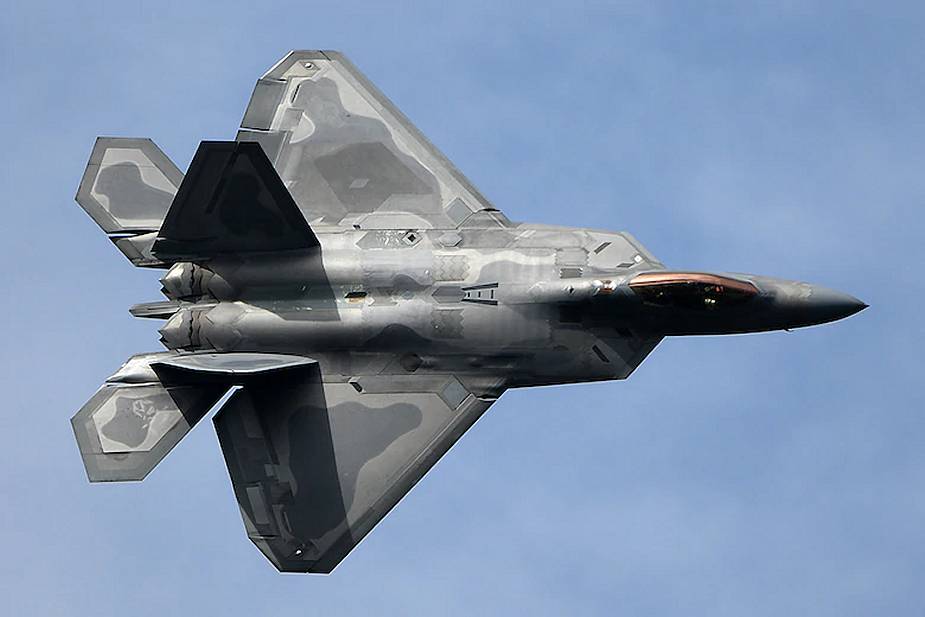According to information published by Israel, officials of the country denies reports of the sale of F-22 Raptor to Israel. On November 3, 2020, Air Recognition had reported that U.S. has given the green light for the sale of F-22 Raptor to Israel according to information released by the Saudi-owned Asharq Al-Awsat newspaper citing senior sources in Tel Aviv.
Follow Air Recognition on Google News at this link
 Maj. Josh Gunderson, F-22 Raptor Demonstration Team pilot, flies during the Lockheed Martin Space and Air Show in Sanford, Fla., Nov. 1, 2020. (Picture source U.S. Air Force)
Maj. Josh Gunderson, F-22 Raptor Demonstration Team pilot, flies during the Lockheed Martin Space and Air Show in Sanford, Fla., Nov. 1, 2020. (Picture source U.S. Air Force)
The F-22 Raptor is a single-seat, twin-engine, all-weather stealth tactical fighter aircraft developed for the United States Air Force (USAF) by the American company Lockheed Martin. The aircraft entered in service with the U.S. air Force in 2005. According to open sources information, a total of 195 F-22 fighter aircraft has been built from 1996 to 2011 and 186 aircraft are operational with the U.S. Air Force.
According to a U.S. Federal Law, the F-22 cannot be exported to protect its stealth technology and classified features. The F-22 was one of the most expensive programs for a fighter aircraft, and during its development, the United States Congress ensured the U.S. military couldn’t share the technology with anyone.
The Advanced Tactical Fighter entered the Demonstration and Validation phase in 1986. The prototype aircraft (YF-22 and YF-23) both completed their first flights in late 1990. Ultimately the YF-22 was selected as the best of the two and the engineering and manufacturing development effort began in 1991 with development contracts to Lockheed/Boeing (airframe) and Pratt & Whitney (engines). EMD included extensive subsystem and system testing as well as flight testing with nine aircraft at Edwards Air Force Base, Calif. The first EMD flight was in 1997 and at the completion of its flight test life this aircraft was used for live-fire testing.
The program received approval to enter low rate initial production in 2001. Initial operational and test evaluation by the Air Force Operational Test and Evaluation Center was successfully completed in 2004. Based on maturity of design and other factors the program received approval for full rate production in 2005. Air Education and Training Command, Air Combat Command and Pacific Air Forces are the primary Air Force organizations flying the F-22. The aircraft designation was the F/A-22 for a short time before being renamed F-22A in December 2005.
The F-22 was designed to be highly difficult to detect and track by radar. Measures to reduce radar cross-section (RCS) include airframe shaping such as alignment of edges, fixed-geometry serpentine inlets and curved vanes that prevent line-of-sight of the engine faces and turbines from any exterior view, use of radar-absorbent material (RAM), and attention to detail such as hinges and pilot helmets that could provide a radar return.
The F-22 was also designed to have decreased radio emissions, infrared signature and acoustic signature as well as reduced visibility to the naked eye. The aircraft's flat thrust-vectoring nozzles reduce infrared emissions of the exhaust plume to mitigate the threat of infrared homing ("heat seeking") surface-to-air or air-to-air missiles. Additional measures to reduce the infrared signature include special topcoat and active cooling of leading edges to manage the heat buildup from supersonic flight.
















